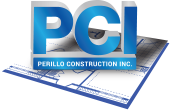In today’s fast-paced work culture, effective collaboration is more than just a buzzword—it’s a critical driver of business success. While leadership and technology play their parts, one often underestimated factor is the layout of your office. Thoughtfully designed spaces can significantly enhance how teams communicate, problem-solve, and innovate together.
The structure of a workplace isn’t just about aesthetics or maximizing headcount. It’s about creating an environment that supports how your team actually works—encouraging both spontaneous interaction and focused productivity.
Understanding the Impact of Physical Space on Human Behavior
The way people interact is often shaped by the environment they’re in. Open areas promote informal exchanges and group discussions, while private corners allow individuals to concentrate or have one-on-one conversations without distraction. A layout that thoughtfully balances these elements can foster a sense of psychological safety and fluid communication.
For example, central hubs such as lounges or café-style seating areas naturally become spots where employees from different departments cross paths and share ideas. In contrast, isolated or overly segmented spaces can inadvertently discourage collaboration and create silos within a company.
Choosing the Right Layout for Your Team Structure
Every company has different collaboration needs, and your office layout should reflect your unique workflow and team dynamics. Some teams benefit from open-plan designs that facilitate constant communication, while others require more separation to focus on individual tasks.
Departments that thrive on creative collaboration—like marketing, design, or product development—often benefit from communal tables, writable surfaces, and movable furniture that supports brainstorming sessions. On the other hand, departments like finance or legal might need enclosed workstations where concentration is key.
Flexibility is critical. Many modern office designs now include hybrid layouts that feature open areas, quiet rooms, and semi-private pods—giving employees the autonomy to choose their environment based on the task at hand.
Creating Flow and Accessibility
The physical flow of your office should support how teams work and move throughout the day. Important spaces—like meeting rooms, break areas, and leadership offices—should be strategically placed to encourage movement and visibility without creating bottlenecks.
When planning the layout, consider how employees interact throughout a typical day. Are collaborative departments near each other? Are shared resources like printers, coffee stations, and whiteboards easily accessible? Designing for convenience reduces friction and promotes more frequent communication.
Additionally, visual cues such as color zoning or varied flooring can subtly guide movement and define team zones without the need for barriers.
Enhancing Collaboration Through Thoughtful Amenities
Amenities can do more than attract talent—they can also serve as hubs of collaboration. Small kitchenettes, comfortable lounges, and shared worktables allow for casual conversations that often spark new ideas. Even something as simple as placing a communal table near a coffee machine can prompt impromptu meetings that lead to valuable breakthroughs.
Acoustic design is also essential. Sound-absorbing materials in high-traffic areas can reduce distractions while allowing energy and interaction to flow. Quiet zones give individuals a place to recharge and focus, helping avoid burnout that can stifle creativity.
Looking Ahead: Designing for Flexibility and Growth
Today’s workforce is more mobile and dynamic than ever. As remote and hybrid work models evolve, office layouts must keep up. Modular design elements—like movable walls, adjustable lighting, and reconfigurable desks—allow businesses to adapt their spaces as their teams and workstyles change.
By designing for change, you ensure that your layout continues to support collaboration, no matter how your business evolves. Adaptable environments also empower employees to create their own ideal workspaces, leading to higher satisfaction and productivity.
Collaboration Starts with Design
Designing your office layout isn’t just a matter of square footage—it’s a strategic decision that shapes how your people connect and collaborate. A space that reflects your team’s needs can lead to stronger relationships, better communication, and more impactful work.
If you’re ready to reimagine your office with collaboration in mind, contact Perillo Construction. Their team specializes in building and renovating commercial interiors that support modern workstyles while aligning with your brand and business goals.

